San Diego, California, USA - April 13, 2012 - Researchers at the University of California in San Diego are using GPUs as part of an effort to save the lives of people diagnosed with cancer, the second-leading cause of death in the U.S.
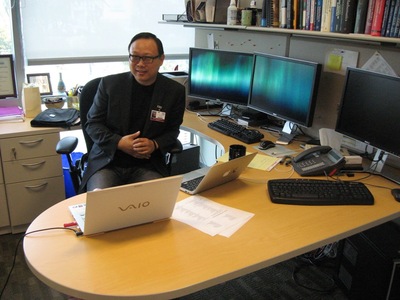 |
Professor Steve Jiang, Ph.D., executive director of the Center for Advanced Radiotherapy Technologies at Moore’s Cancer Center.
Courtesy of NVIDIA |
| |
San Diego, California, USA - April 13, 2012
By Ken Brown, PR Manager for NVIDIA
Researchers at the University of California in San Diego are using GPUs as part of an effort to save the lives of people diagnosed with cancer, the second-leading cause of death in the U.S.
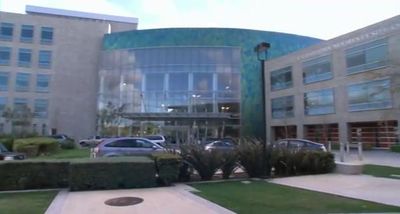 |
The Center for Advanced Radiotherapy Technologies at Moore’s Cancer Center, the University of California San Diego.
Courtesy of NVIDIA |
| |
We visited Moore’s Cancer Center at UCSD last month to find out what the research team is doing.
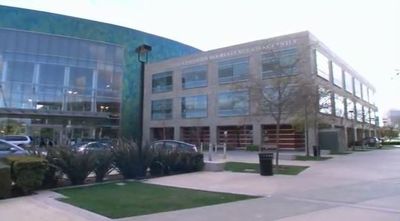 |
The Center for Advanced Radiotherapy Technologies at Moore’s Cancer Center, the University of California San Diego.
Courtesy of NVIDIA |
| |
Leading the research is Professor Steve Jiang, executive director of the Center for Advanced Radiotherapy Technologies at Moore’s Cancer Center.
 |
Dr. Arno Mundt, M.D., professor and chair of the Department of Radiation Medicine at UCSD.
Courtesy of NVIDIA |
| |
He said about two-thirds of cancer patients in the U.S. are treated with radiotherapy, which has proven effective for many cancer types.
Radiotherapy delivers a lethal dose of radiation to the tumor to kill cancerous cells.
 |
Jiang has developed a new approach called online adaptive radiotherapy (ART) that replaces the static process with a dynamic one.
Courtesy of NVIDIA |
| |
The treatment is complex and specific to each patient.
The radiation beam parameters have to be tailored to each patient’s case through a process called treatment planning.
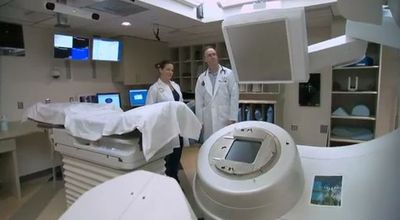 |
Jiang has developed a new approach called online adaptive radiotherapy (ART) that replaces the static process with a dynamic one.
Courtesy of NVIDIA |
| |
Treatment plans are generated based on a snapshot of the patient’s anatomy prior to treatment, and then delivered over a number of weeks.
 |
New NVIDIA GPU
Courtesy of NVIDIA |
| |
Unfortunately, the treatment method can’t keep up with the patient’s anatomy, which can vary from day to day due to changes in the tumor’s size and position.
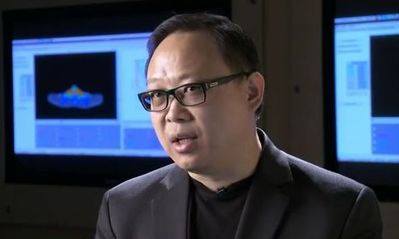 |
Professor Steve Jiang, Ph.D., executive director of the Center for Advanced Radiotherapy Technologies at Moore’s Cancer Center.
Jiang has developed a new approach called online adaptive radiotherapy (ART) that replaces the static process with a dynamic one.
Courtesy of NVIDIA |
| |
This anatomical variation compromises the success of the treatment.
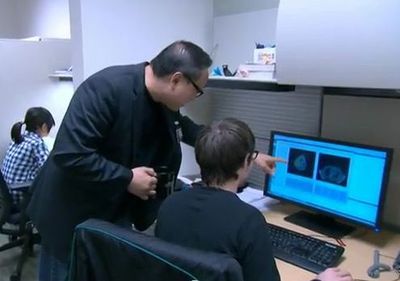 |
Professor Steve Jiang, Ph.D., executive director of the Center for Advanced Radiotherapy Technologies at Moore’s Cancer Center.
Jiang has developed a new approach called online adaptive radiotherapy (ART) that replaces the static process with a dynamic one.
Courtesy of NVIDIA |
| |
Jiang has developed a new approach called online adaptive radiotherapy (ART) that replaces the static process with a dynamic one.
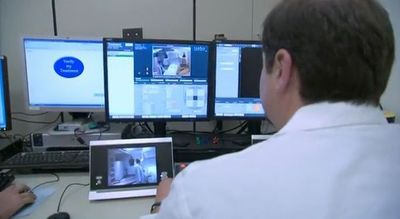 |
Researchers at the University of California San Diego are testing a new GPU-accelerated technique to improve the effectiveness of radiation treatment.
Courtesy of NVIDIA |
| |
Using GPUs, the medical team can process the pictures and develop a new treatment plan in a few minutes.
The new technique can significantly reduce radiation administered to healthy tissue, while focusing more radiation on the tumor itself.
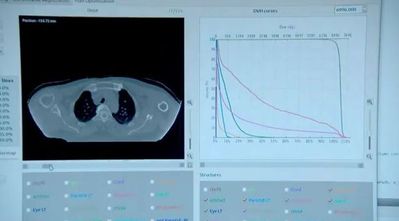 |
Researchers at the University of California San Diego are testing a new GPU-accelerated technique to improve the effectiveness of radiation treatment.
Courtesy of NVIDIA |
| |
Jiang says, “Over the past few years, we have developed a series of novel GPU computational tools to achieve online re-planning with both accuracy and real-time efficiency. Our work will facilitate the clinical realization of online ART, which represents a quantum leap forward in cancer radiotherapy.”
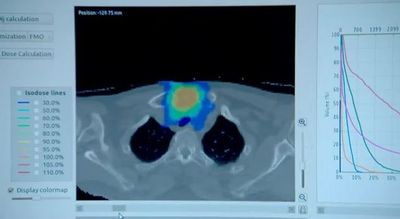 |
Researchers at the University of California San Diego are testing a new GPU-accelerated technique to improve the effectiveness of radiation treatment.
Courtesy of NVIDIA |
| |
Jiang’s technique will enter clinical trials this summer at Moore’s Cancer Center.
His colleague, Dr. Arno Mundt, professor and chair of the Department of Radiation Medicine at UCSD, says the outcome of these trials could have a profound impact on cancer treatment in the U.S. and, potentially, worldwide.
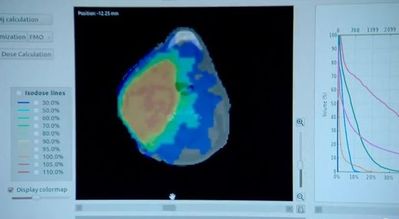 |
Researchers at the University of California San Diego are testing a new GPU-accelerated technique to improve the effectiveness of radiation treatment.
Courtesy of NVIDIA |
| |
We wish Jiang and his team all the best in their research.
Ken Brown
PR Manager for NVIDIA
Source: NVIDIA
http://nvidianews.nvidia.com/
Video
UCSD Researchers Test NVIDIA GPU-Accelerated Cancer Treatment
http://blogs.nvidia.com/?p=11416
About NVIDIA
NVIDIA (NASDAQ: NVDA) awakened the world to computer graphics when it invented the GPU in 1999.
Today, its processors power a broad range of products from smart phones to supercomputers.
NVIDIA's mobile processors are used in cell phones, tablets and auto infotainment systems.
PC gamers rely on GPUs to enjoy spectacularly immersive worlds.
Professionals use them to create visual effects in movies and design everything from golf clubs to jumbo jets.
And researchers utilize GPUs to advance the frontiers of science with high-performance computing.
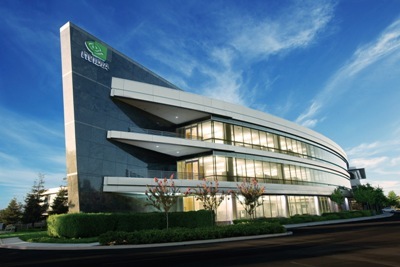 |
NVIDIA’s Santa Clara headquarters.
Courtesy of NVIDIA |
| |
The company holds more than 2,100 patents worldwide, including ones covering ideas essential to modern computing.
For more information, see www.nvidia.com
Source: NVIDIA
http://www.nvidia.com/object/newsroom.html
ASTROMAN Magazine - 2011.11.12
New GPU Applications Accelerate Search for More Effective Medicines and Higher Quality Materials
http://www.astroman.com.pl/index.php?mod=magazine&a=read&id=1099
ASTROMAN Magazine - 2011.08.07
NVIDIA Tesla GPUs Used by J.P. Morgan Run Risk Calculations in Minutes, Not Hours
http://www.astroman.com.pl/index.php?mod=magazine&a=read&id=1030
ASTROMAN Magazine - 2011.03.27
NVIDIA GeForce GTX 590 Is World's Fastest Graphics Card
http://www.astroman.com.pl/index.php?mod=magazine&a=read&id=930
ASTROMAN Magazine - 2011.01.16
Intel to Pay NVIDIA Technology Licensing Fees of $1.5 Billion
http://www.astroman.com.pl/index.php?mod=magazine&a=read&id=881
ASTROMAN Magazine - 2010.10.29
NVIDIA Tesla GPUs Power World's Fastest Supercomputer
http://www.astroman.com.pl/index.php?mod=magazine&a=read&id=831
ASTROMAN Magazine - 2010.10.10
New NVIDIA Quadro Professional Graphics Solutions
http://www.astroman.com.pl/index.php?mod=magazine&a=read&id=820
ASTROMAN Magazine – 2010.05.09
NVIDIA GPUs Provide Edge to 3D Animators Utilizing Autodesk Softimage 2011
http://www.astroman.com.pl/index.php?mod=magazine&a=read&id=716
ASTROMAN Magazine – 2010.02.27
NVIDIA Names University Of Maryland A CUDA Center Of Excellence
http://www.astroman.com.pl/index.php?mod=magazine&a=read&id=671
ASTROMAN Magazine – 2010.02.27
ADAM - Notion Ink Pixel Qi tablet with NVIDIA Tegra2 processor
http://www.astroman.com.pl/index.php?mod=magazine&a=read&id=670
ASTROMAN Magazine – 2010.02.27
Next Generation NVIDIA Tegra
http://www.astroman.com.pl/index.php?mod=magazine&a=read&id=669
ASTROMAN magazine
|

